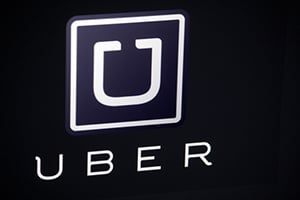 Will Uber go public in 2017? Right now, the answer appears to be no.
Will Uber go public in 2017? Right now, the answer appears to be no.
In June 2016, Uber CEO Travis Kalanick said he would delay the IPO as late as possible.
The reason?
Kalanick wants to make Uber stock more valuable for private shareholders before going public. And right now, the ride-hailing app is increasing its value through growing net revenue.
Uber reportedly generated $2 billion in net revenue for 2015.
For 2016, net revenue was expected to climb to $5.5 billion. That's a revenue increase of 175% in just one year.
Despite that soaring revenue, Uber is still far from profitable...
Uber lost $2.2 billion in 2015, and those losses were expected to climb to $3 billion in 2016.
| Year | Uber Net Revenue | Uber Losses |
| 2014 | $495.3 million | $671.4 million |
| 2015 | $2 billion | $2.2 billion |
| 2016 | $5 billion | $3 billion |
While we don't have exact spending totals, according to TechCrunch, Uber is spending most of its money on:
- Developing self-driving cars
- Growing its food delivery business
- Paying drivers and employees
- Lawsuits and lobbying
So Kalanick still needs time to make his company profitable before an official Uber IPO date.
Trending Story: 5 VR Stocks to Buy for Long-Term Gains
But he may need to go public sooner rather than later...
That's because Uber's competitors are growing at an alarming rate. According to The Wall Street Journal, ride-hailing service Lyft is seeking another $500 million round of investments. That could potentially value Lyft between $5.5 billion to $6 billion.
If Lyft goes public before Uber, it can use the IPO money to increase marketing and cut into Uber's market share.
And that's not even the biggest threat that Uber is facing ahead of an IPO.
His name is Elon Musk...
The Biggest Threat Before Uber Goes Public
[mmpazkzone name="end-story-hostage" network="9794" site="307044" id="138536" type="4"]
Back in July 2016, Tesla Inc. (Nasdaq: TSLA) CEO Elon Musk shared a new master plan for his company.
He didn't provide a timetable, but Musk wants to turn customer cars into self-driving taxis.
According to Musk, cars are only in use 5% to 10% each day. So while those cars aren't in use, they can drive themselves around (in autopilot mode) and pick up ride hailers.
Musk believes that renting a Tesla vehicle as a taxi could offset loans and lease costs for Tesla vehicle owners.
But that's not all...
"In cities where demand exceeds the supply of customer-owned cars, Tesla will operate its own fleet, ensuring you can always hail a ride from us no matter where you are," Musk said in his plan.
This is a massive threat because Uber does not own its vehicles. And while current Uber drivers will not want to purchase self-driving cars that could put them out of business, Uber may be forced to purchase its own fleet of self-driving cars.
According to WSJ, there were 160,000 U.S. Uber drivers as of Jan. 25, 2015. At a conservative cost of $35,000 (the cost of a Tesla Model 3), Uber would need to spend $5.6 billion to replace all of its U.S. drivers with self-driving cars.
That would increase the time it takes for the ride-hailing app to become profitable, and Uber would still have a giant competitor in Tesla to deal with.
We know that Money Morning readers have a ton of questions about a potential Uber IPO.
That's why we made a free Uber stock guide. In it, you'll learn how Uber was founded, how Uber works, how much it's worth, and whether or not Uber stock is a good investment.
You can find the guide, right here.


